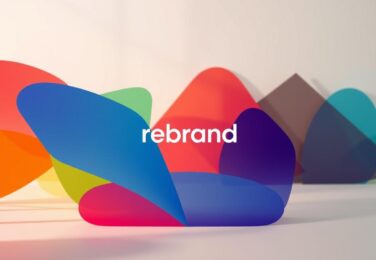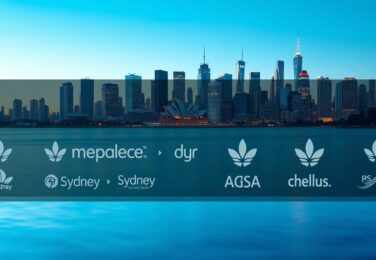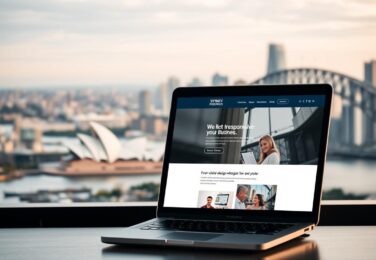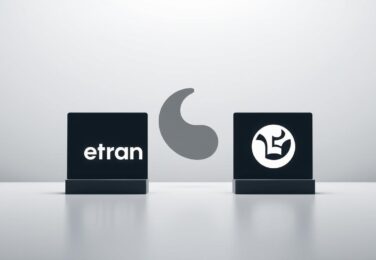Top 5 Branding Mistakes Sydney Businesses Should Avoid

Table of Content
We’ve been in Surry Hills boardrooms, met café owners in Parramatta, and walked the CBD streets. We’ve heard the same story over and over: a great product, but a confusing brand. It’s frustrating to see promising work stall due to avoidable branding mistakes.
This article will cover the top five branding mistakes Sydney businesses make. We’ll share practical examples and fixes from our work with local clients. Our advice is based on strategy, local market knowledge, and hands-on experience with Sydney businesses.
Branding mistakes in Sydney affect sales, customer retention, and reputation. We’ll discuss visual identity, customer experience, voice, messaging, audience research, digital presence, and scalability. If you’re struggling with brand customisation or need help with briefs and collaboration, contact us at hello@defyn.com.au.
Key Takeaways
- Common branding mistakes can cost time, customers, and revenue for Sydney businesses.
- Practical branding examples show how small fixes can improve trust and sales.
- We focus on strategy tailored to local markets like Surry Hills, Parramatta, and the CBD.
- Later sections will give step-by-step advice on visual identity, CX, messaging, and digital presence.
- If you need help with briefs or brand customisation, email hello@defyn.com.au.
Understanding why branding matters for Sydney businesses
We work with clients all over Sydney. We see how their brand choices affect what customers think. The city’s mix of city professionals, beachside spots, and diverse suburbs means brands need to adapt fast.
Local markets shape what people expect in terms of price, design, and word-of-mouth. Brands need to speak to the multicultural audience in a way that feels relevant. Small wins and mistakes get big attention in Sydney, thanks to influencers and media.
Consistent branding makes life easier for customers. When everything from logos to customer service matches, people notice more. Studies show that being consistent can boost sales and make brands more memorable.
We also talk about common branding mistakes to avoid. Cheap logos, mismatched materials, and random messages can harm your brand. Investing in quality and strategy can lead to better visibility and loyalty over time.
Here’s a comparison of quick fixes versus smart branding investments:
| Area | Short-term Cut | Strategic Investment |
|---|---|---|
| Logo and visual identity | Template logos, inconsistent colours | Custom identity, documented colour and usage |
| Customer experience | Ad-hoc service, mixed messaging | Trained staff, aligned brand promise and CX |
| Digital presence | Outdated site, sporadic posts | Optimised website, regular content and SEO |
| Marketing collateral | Multiple fonts, off-brand templates | Brand templates, approved assets and tone |
| Long-term impact | Lower recognition, higher churn | Stronger trust, improved conversion |
Avoiding inconsistent visual identity across touchpoints
For Sydney businesses, a clear visual identity is key to being recognised. Brands often lose their edge when their look varies across different platforms. Even small differences can make a business seem unprofessional.
Common slip-ups we see in local businesses
Using different logos can confuse customers. For example, a café on King Street might have a different logo on its window than on takeaway cups.
Colour and typography mistakes can also weaken a brand. Hospitality venues often change fonts between menus and social media.
Using low-quality images or outdated signage can give a bad impression. Small retailers might use old PNGs or stretched logos that look blurry on modern screens.
Using logos incorrectly on social media can break brand cohesion. We see restaurants using partner logos and stickers without permission.
Practical steps to create and enforce a brand style guide
First, audit your existing assets to see what needs fixing. Make a list of logos, signage, menus, website files, and social templates.
Set clear rules for logo use and define primary and secondary colours. Use hex and RGB values to guide designers and printers.
Choose fonts that work well online and in print. Specify font sizes for headings, body text, and buttons. Also, decide on the style of images and icons.
Include a brief on tone and messaging for staff and designers. Add dos and don’ts, file naming rules, and version control to avoid mistakes.
Tools and resources to maintain visual consistency
For small teams, cloud asset managers like Google Drive or Dropbox are great. They keep files in one place and reduce duplicates.
For larger teams, consider brand management platforms like Frontify or Brandfolder. These systems ensure everyone follows the brand style guide.
Use Adobe Creative Cloud for design control and Canva for easy-to-edit templates. Implement a digital asset management workflow for growth.
Regularly audit your brand and train staff to keep your visual identity consistent. This prevents mistakes and keeps your brand strong.
| Issue | Where we see it | Quick fix | Recommended tool |
|---|---|---|---|
| Multiple logo versions | Storefronts, menus, social posts | Centralise final logos and remove old files | Brandfolder |
| Mismatched colours | Printed signage vs digital ads | Define hex/RGB values and update templates | Frontify |
| Inconsistent typography | Web, print and apps | Choose web/print-safe fonts and create layout rules | Adobe Creative Cloud |
| Low-resolution assets | Social images and supplier flyers | Replace with vector or high-res exports | Dropbox or Google Drive |
| Improper logo use | Influencer posts and partner promos | Publish clear do/don’ts in the brand style guide | Canva for templated social kits |
Neglecting the customer experience as part of your brand
Brands often promise quality but fail to deliver. Every interaction, from website to delivery, reflects the brand’s image. When reality doesn’t meet expectations, trust is lost, and reputation takes a hit.
Exceptional customer service is key to a premium brand image. Sydney’s top restaurants, like Quay and Bennelong, set high standards and maintain them. Retailers like David Jones keep their premium image by focusing on excellent service, both in-store and online.
How customer experience and brand promise must align
We compare what brands promise with what customers get. If a brand says it’s fast and easy, it must be. Staff must embody the brand through proper training and clear communication. Any mismatch can confuse and lose customers.
Examples of poor CX damaging local brands
Long waits and confusing policies can ruin a brand’s image. In Sydney, cafes and tour operators have suffered from poor online booking systems and inconsistent staff answers. These mistakes serve as cautionary tales for brands.
Customer journey mapping to fix brand experience gaps
We start by creating a journey map. First, we define customer personas. Then, we list all touchpoints. Next, we collect real feedback. After that, we assign owners for each point and measure progress with NPS and CSAT.
To improve, we use scripted responses, train staff, streamline processes, and follow up with customers. These steps help bridge the gap between CX and brand, reducing common mistakes.
We test new approaches with a small pilot, then scale up if they work. This method proves the value of investing in customer experience and brand development.
Not defining your brand voice and messaging clearly
Mixed or generic messaging can confuse customers and erode trust. In Sydney’s crowded markets, like cafés, accounting firms, and real estate, unclear tone makes it hard to stand out. When we spot branding mistakes, they often start with muddled language that weakens positioning and reduces repeat business.
We start by defining personality traits that match your business. Choose whether you are friendly, professional, witty, or no-nonsense. Next, map audience language preferences so your copy speaks like real customers. Using local cultural references and light Aussie slang can help, as long as it feels authentic and respectful.
Write sample messages for key moments. Create a homepage headline, a social post, an email welcome, and an FAQ reply. Test these versions in small focus groups or run A/B tests to see what resonates. This practical work turns a concept into a living brand voice that teams can use.
We favour a simple process to stop common problems. Train staff on approved phrases and keep a copy bank for rapid responses. This reduces off-brand posts and prevents rapid drift into inconsistent tone across channels.
Below is a messaging checklist we use to keep teams aligned and to avoid the usual branding mistakes.
| Item | Purpose | Example |
|---|---|---|
| Core brand promise | Defines the primary benefit you deliver | Reliable property advice that saves time and stress |
| Tagline | Short, memorable line for ads and signage | Clear finance. Fair advice. |
| Elevator pitch | 30-second description for staff to use | We help busy Sydneysiders find better mortgage options, fast |
| Social media tone | Guides voice, emojis, and post style | Warm, helpful, conversational — occasional local references |
| Email templates | Consistent greetings, sign-offs and CTAs | Welcome, follow-up and support templates approved for use |
| Crisis-response copy | Pre-approved messaging for urgent issues | Calm, transparent statements for immediate distribution |
| Copy bank | Library of approved phrases and headlines | Reusable lines for ads, FAQs and scripts |
| Review schedule | Regular audit to keep messaging fresh | Quarterly review with marketing and customer teams |
Failing to research and understand your target audience
Many brands skip target audience research and face the consequences later. Without understanding their audience, they often miss the mark. Sydney’s diverse neighborhoods and wide demographic mix make regular research essential for local businesses to stay relevant.
For Sydney businesses, we recommend practical research methods. Simple customer surveys, short exit polls in-store, and Instagram polls provide quick feedback at low cost. Google Analytics and CRM data show behavior patterns over time. Face-to-face focus groups and in-store observation add context that numbers alone can’t provide.
We suggest a mix of techniques to balance depth and budget. Social listening uncovers conversations about competitors and trends. Competitor benchmarking shows where your offer stands. Small retailers can run brief loyalty-card feedback or short receipt surveys to learn fast.
Turning findings into action is where most teams stumble. We segment customers by behavior and value, then tailor messaging and offers for each group. This can mean changing product assortments, adjusting service levels, or shifting creative direction such as imagery, tone, and color to match preferences.
We build an ongoing insight calendar so research informs decisions continuously. Quarterly reviews spot quick shifts. Annual deep dives uncover structural changes in the market. This rhythm reduces common branding mistakes to avoid and keeps strategy grounded in real people.
| Research Method | What it reveals | Best for | Cost |
|---|---|---|---|
| Customer surveys | Demographics, satisfaction, preferences | Retailers, hospitality, services | Low |
| Instagram polls & social listening | Trends, sentiment, product feedback | Direct-to-consumer brands, cafes | Low |
| Google Analytics | Online behaviour, traffic sources, conversion paths | Ecommerce, appointment bookings | Low |
| CRM data analysis | Customer lifetime value, repeat patterns | Subscription services, boutiques | Medium |
| Focus groups | Motivations, language, emotional drivers | New product launches, rebrands | Medium–High |
| In-store observation | Behaviour in context, product interactions | Retail and hospitality | Low–Medium |
We use audience insights to create real branding examples that work locally. When teams act on clear data, decisions feel less risky and creative becomes more on-target. That is how strong brands in Sydney avoid being undone by poor assumptions.
Overlooking the role of digital presence in modern branding
A strong digital presence is key to modern branding. For many, a website, social media, and search results are their first impression. Sydney businesses need to focus on mobile optimisation, fast loading times, and clear local signals like Google Business Profile to stand out in local searches.

Website, social media and search as brand-building tools
Our website is where brand promise, product details, and customer paths meet. A responsive design and quick pages help visitors stay longer and trust us. Active social media profiles add personality and touchpoints for engagement. Good SEO makes us more visible, so people find us when they need us.
Common digital mistakes we advise against
We see the same branding mistakes over and over: outdated websites, poor mobile UX, inconsistent social profiles, and weak SEO. Missing Google Business Profile optimisation and ignoring online reviews hurts local credibility. These errors reduce search visibility, cost leads, and damage perceived reliability.
Steps to strengthen your online brand footprint
Start with a responsive website and work on page speed. Implement local SEO with consistent NAP data, local schema, and citations. Keep social channels active and aligned with your visuals and voice. Respond to reviews to build trust. Use content marketing to show expertise and track outcomes with analytics.
| Area | Common Issue | Quick Fix |
|---|---|---|
| Website | Slow load times, non-responsive pages | Enable caching, compress images, adopt responsive templates |
| Mobile UX | Poor navigation and unreadable text | Simplify menus, increase font size, test on iOS and Android |
| SEO | Weak on-page SEO and missing local signals | Optimise titles, meta descriptions and target “branding examples” phrases |
| Social profiles | Inconsistent imagery and messaging | Create a simple content calendar and unified style guide |
| Online reviews | Unanswered or ignored feedback | Respond promptly, address issues and showcase positive reviews |
branding examples
We share branding examples from Sydney businesses. These examples show what works and what doesn’t. They help you avoid mistakes and learn from successes.
Local Sydney branding examples that get it right
Atlassian has a clear message and strong brand identity everywhere. This makes it easy for customers to see the value.
Thankyou combines a social mission with a consistent look and feel. This builds trust and encourages people to buy again.
Independent cafes in Surry Hills and Newtown focus on a unified look and great service. This creates a memorable experience that gets people talking.
Corporate branding examples and what smaller businesses can learn
Qantas has a strong visual brand that works everywhere. Their brand is consistent online and offline.
Commonwealth Bank uses research to create messages that work. They keep their brand consistent with templates and rules.
For small businesses, we suggest three steps. First, define your value clearly. Then, create templates for common brand assets. Lastly, implement changes gradually to manage costs and impact.
Case studies illustrating recoveries from branding mistakes
A local café fixed its branding and trained staff. They also had a big event. This led to a 22% increase in foot traffic in six weeks.
A fashion retailer improved its online checkout. They made product images clearer and the site faster. This boosted sales by 35% in two months.
A professional branding services in sydney services firm updated its messaging and homepage. They also focused on clear calls to action. This doubled their bookings in three months.
Ignoring scalability and future-proofing in brand design
Good brands often face growth limits due to design choices. A logo as a single raster file, a colour palette that fails in print or on mobile, and fonts without web licences are common issues. These problems arise when a brand wants to expand, add new products, or scale digital campaigns.

Complex marks lose clarity at small sizes. Relying too much on trendy effects can quickly date a brand. Using unlicenced or desktop-only fonts causes inconsistent typography online. Assets as PNGs or JPEGs lose quality when resized. These mistakes can stall expansion and upset partners.
How to plan for scalability from day one
Start with vector logos and responsive lockups for different layouts. Create a colour system with primary, secondary, and tint rules for consistent colours across media. Licence web fonts for consistent typography on websites and apps. Develop a style guide with templates for various uses.
Balancing distinctiveness with longevity
Choose timeless forms over short-lived trends. Reserve campaign-level creativity for seasonal updates. Use a modular brand architecture for sub-brands and co-branding. Schedule brand reviews every three to five years and maintain a central asset library for efficient updates.
| Common Problem | Impact on Growth | Scalable Fix |
|---|---|---|
| Raster-only logo | Poor reproduction across formats, loss of clarity at small sizes | Create vector logo files with responsive lockups for different uses |
| Highly specific colour choices | Inconsistent print and digital reproduction, limits co-branding | Develop a flexible colour system with tints and secondary palettes |
| Unlicenced or unavailable web fonts | Typographic inconsistency on websites and apps | Licence web fonts or choose system-friendly alternatives |
| No component library or templates | Slow campaign production, inconsistent look across channels | Build a component-based style guide and reusable templates |
| Trend-driven identity | Visuals date quickly, costly rebrands | Combine timeless design cues with adaptable campaign layers |
We learn from brands like Apple and Qantas. They use simple core marks with detailed systems. This approach avoids common mistakes and supports future of branding future-proofing while keeping the brand’s personality strong.
Working with designers without clear briefs or collaboration
Skipping clear design briefs can lead to project failure. Briefs outline objectives, scope, timelines, budgets, and success metrics. They ensure designers meet business goals.
A weak brief can cause wasted time, misaligned creative, and higher costs. It turns small issues into big branding mistakes to avoid.
Why briefs matter and what to include
A brief is like a roadmap for your project. Start with your business background and mission. Then, outline your target audience and personas.
Add the competitive landscape and primary objectives, like a rebrand or new product launch. List required deliverables and file formats, and brand constraints such as existing logos or legal needs.
State tone and imagery direction, budget, and deadlines. Include an approval process. Also, add a few branding examples that inspire the creative direction.
How to collaborate effectively with your designer
We start with discovery workshops to align on purpose and priorities. Agree on milestones with clear feedback windows for focused revisions. Use shared project management tools like Asana or Trello to track tasks and approvals.
Provide timely, consolidated feedback instead of piecemeal comments. Document decisions and maintain open communication. Learning to collaborate with designers in this way reduces misunderstandings and speeds up delivery.
If you’re struggling with brand customisation: contact hello@defyn.com.au
If creating useful briefs or collaborating is hard, reach out for help. We can review your brief, suggest improvements, and show branding examples that fit your market. Working with experienced designers makes avoiding branding mistakes easier and more predictable.
Conclusion
Sydney businesses face many challenges, like inconsistent branding and poor digital presence. They also struggle with unclear messaging and neglecting customer needs. These issues can harm trust and sales.
By avoiding these mistakes, you can grow your business. Look at real examples to see how small changes can make a big difference. This shows that fixing these problems can lead to success.
Start by doing a brand audit and creating a style guide. Understand your customers and define your brand’s voice. Make sure your website and social media are up to date.
Invest in research to know your audience better. Build a brand system that can grow with your business. Focus on the most critical issues first and then tackle the rest step by step.
If you need help with branding, contact hello@defyn.com.au. We’re here to assist Sydney businesses. We can help you turn branding mistakes into opportunities for growth.










